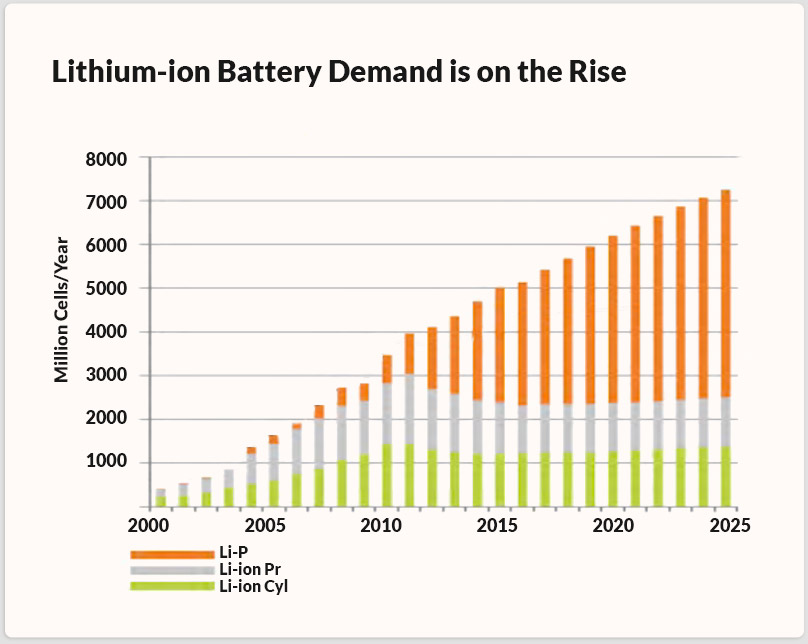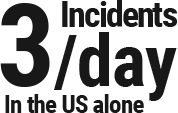


This partnership is bound to come from those in the industry who treat safety as a priority, and fortunately for the flying public, that change appears to be just around the corner.
For part 121 freighters and on over 69% of world Air Cargo (part 121)
Including Government, Military and Part 91/135 operators.
Yet thousands are flying unprotected
Today while cargo operators the world over are equipping their fleets with EVAS, passenger fleets are still behind the curve in equipping their aircraft. Despite the rising concern of smoke and fire on aircraft due to Lithium batteries and their increasing presence aboard commercial flights, the fact is that a higher percentage of cargo aircraft are protected today than are the planes that fly millions of people around the globe annually... a staggering fact that can be changed.



An overview of the Emergency Vision Assurance System
Capt. Depete - VP of ALPA shares his testimonial about EVAS
“Oil from the APU (Auxiliary Power Unit) was leaking into the air conditioning hot-air ducts, which resulted in a great deal of smoke in the cockpit. The smoke began coming in through the air vents and filling the cabin and cockpit to the point where I couldn’t see anything, including the flight instruments. At nighttime with an overhead light turned on, it created a beam of light which did nothing more than illuminate the smoke in the cockpit. This is like turning your high beams on and driving in fog. You can’t see anything, except what’s close to you. We donned our smoke goggles which protected our eyes against the smoke, but we still were unable to see anything. I had to lean so far forward in an attempt to see the flight instruments that I was pushing on the yoke. I was leaning in such a very awkward position simply to see the flight instruments..”
“Another emergency I had was a burning air conditioning recirculation fan. It was burning up and shorting out, and the fumes were so noxious they were burning our eyes, and our throats. We needed to shut down all our electric equipment to try to figure out what was causing this, so we shut everything off, including our weather radar, which we were using to circumnavigate thunderstorms. That was a bit hair raising.”
“The cockpit filled with smoke, it wasn’t insidious, it happened all of a sudden, real quickly, and we didn’t know what caused that one, but we had the same issue--I couldn’t see my flight instruments. I had to put on my mask and goggles, and the oxygen mask hose caught on something. I couldn’t lean forward, and couldn’t figure out what it was caught on. I couldn’t see anything anyway, so here I am trying to get closer to my flight instruments, and I couldn’t. I couldn’t see the panel, so I’m feeling around the cockpit by hand where the auto pilot controls are, Until we get this smoke issue resolved, we can’t see anything in the cockpit or what to do.”

EVAS is certified for most Boeing, Airbus and ETOPS aircraft flying today. The system requires virtually no installation. EVAS only takes the space of one Jeppesen Manual. When needed, the pilot removes the IVU (Inflatable Vision Unit) from the EVAS case and pulls a tab to activate the system. The IVU inflates with one lobe above and one below the glareshield. The whole process only takes around 30 seconds.



One of the largest trends in the growth of in-flight fire is due to the transportation of lithium batteries. Grey market batteries and chargers are a high risk. The demand for lithium batteries continues to rise. They are in virtually every electronic device. Lithium batteries are part of modern life, so we as an industry have no choice but to mitigate it because we are not going to eliminate this threat.


An average of 560+ lithium batteries per flight.

Due to smoke or fumes on the aircraft in the US alone.

EVAS is certified on over 120 aircraft types.
The FAA flies with EVAS on their aircraft, as do many government and executive aircraft around the world, a clear testament to the caliber of approval EVAS has as a serious safety enhancement.
From The U.S to Europe, the Mid East and Asia, governments around the world have equipped their countries planes with EVAS.
Both CAPA and ALPA, some of the largest pilot unions in the world, have supported smoke displacement as a viable and valuable method to safeguard pilots from blinding smoke in the cockpit.
11.2.6 In the event that the other controls and mitigations listed above have not been effective, the crew may experience smoke in the flight deck that reduces visibility (protective breathing equipment is already required but does not necessarily provide visibility). There are means to displace smoke physically in order to make the flight critical instruments and electronic systems visible in the event of significant loss of visibility in the flight deck. To be most effective, a manufacturer should align any vision augmentation system with the capability and duration of the protective breathing system.

EVAS has received the Aerospace Industry’s highest award in the category of “Training & Safety” at the International Paris Air Show